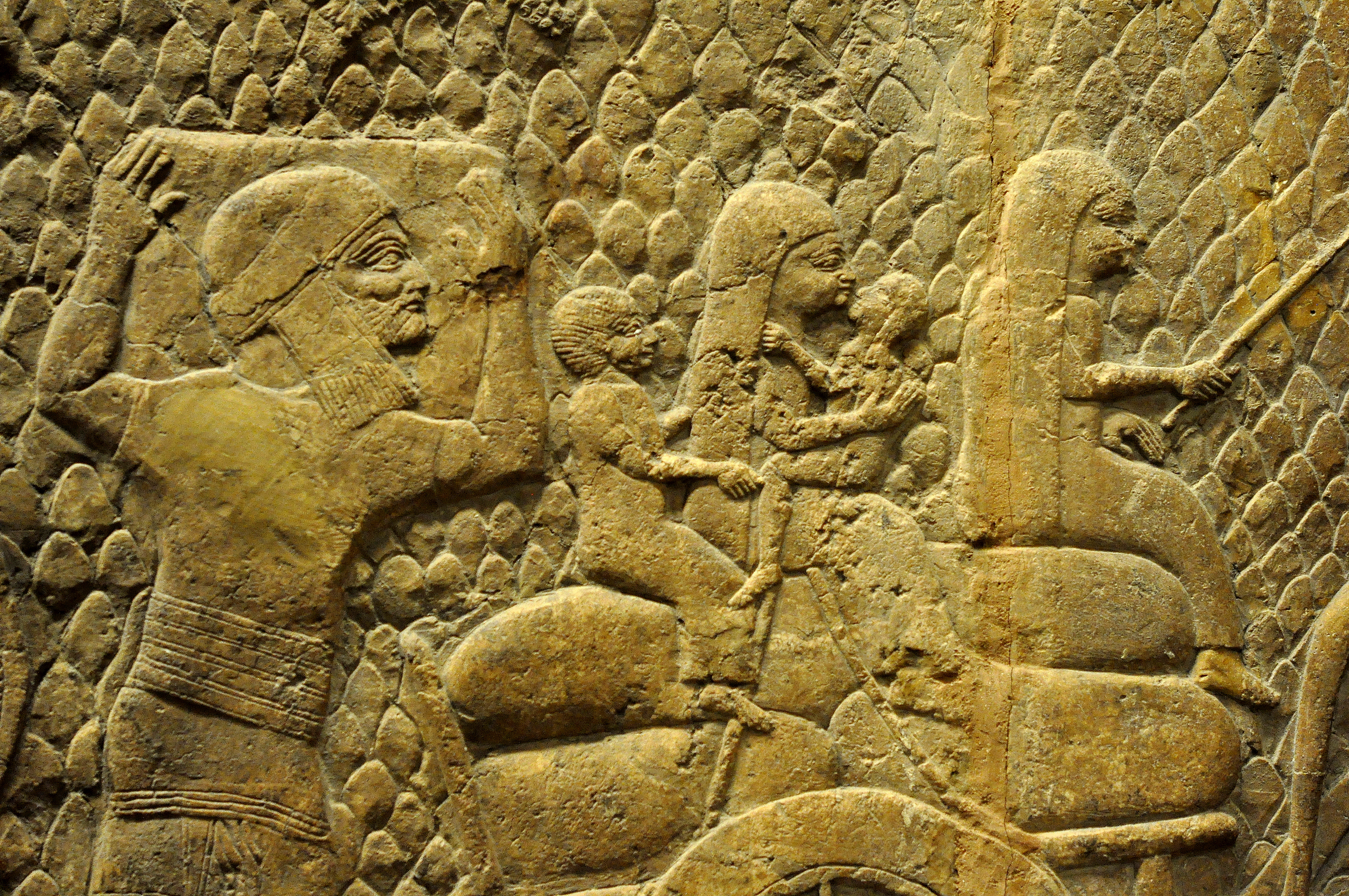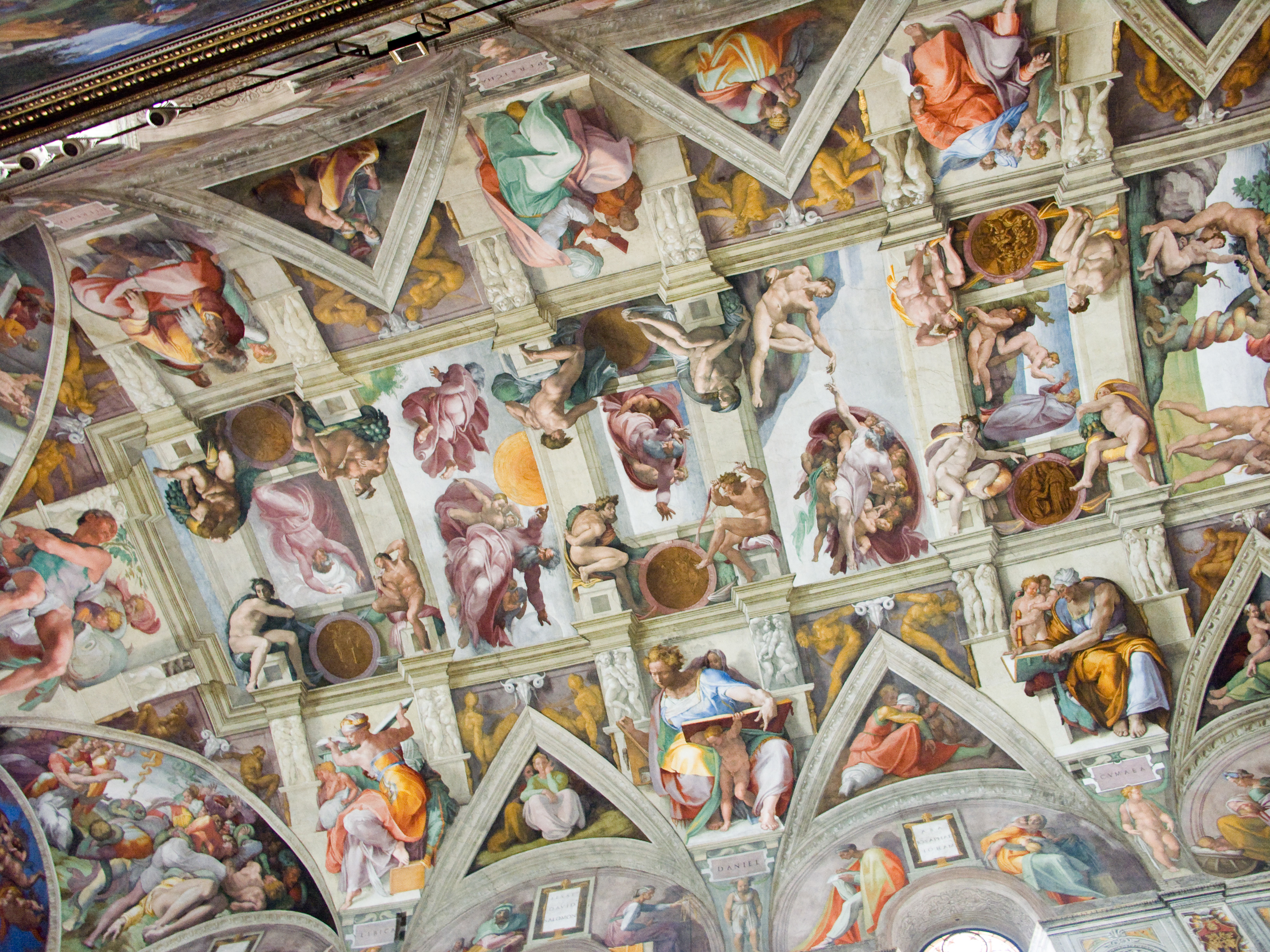|
Crossing Of The Red Sea (Bronzino)
''The Crossing of the Red Sea'', also known as ''The Crossing of the Red Sea and Moses Appointing Joshua'', is a fresco painting by the Italian artist Agnolo di Cosimo, known as Bronzino, finished in 1542. It depicts the Nation of Israel crossing the Red Sea from the book of Exodus and Moses commissioning Joshua to lead the Israelites into the promised land from the book of Numbers. It is housed in the Palazzo Vecchio, Florence. In 1540, Cosimo I de' Medici and/or his wife, Eleanor of Toledo, commissioned this and other frescoes for Eleanor's private chapel. Three of the four walls of the small chapel found on the second floor of the palace are covered with works telling the story of Moses. Composition The large fresco is an example of Maniera art and is found on the south wall of the chapel. It is framed by fictive architectural elements including columns and an arch that provide the illusion the scene is contained in a lunette. The spandrels in the upper corners boast me ... [...More Info...] [...Related Items...] OR: [Wikipedia] [Google] [Baidu] |
Bronzino
Agnolo di Cosimo (; 17 November 150323 November 1572), usually known as Bronzino ( it, Il Bronzino ) or Agnolo Bronzino, was an Italian Mannerist painter from Florence. His sobriquet, ''Bronzino'', may refer to his relatively dark skin or reddish hair. He lived all his life in Florence, and from his late 30s was kept busy as the court painter of Cosimo I de' Medici, Grand Duke of Tuscany. He was mainly a portraitist but also painted many religious subjects, and a few allegorical subjects, which include what is probably his best-known work, ''Venus, Cupid, Folly and Time'', c. 1544–45, now in London. Many portraits of the Medicis exist in several versions with varying degrees of participation by Bronzino himself, as Cosimo was a pioneer of the copied portrait sent as a diplomatic gift. He trained with Pontormo, the leading Florentine painter of the first generation of Mannerism, and his style was greatly influenced by him, but his elegant and somewhat elongated figures always a ... [...More Info...] [...Related Items...] OR: [Wikipedia] [Google] [Baidu] |
Hebrews
The terms ''Hebrews'' (Hebrew: / , Modern: ' / ', Tiberian: ' / '; ISO 259-3: ' / ') and ''Hebrew people'' are mostly considered synonymous with the Semitic-speaking Israelites, especially in the pre-monarchic period when they were still nomadic. However, in some instances it may also be used in a wider sense, referring to the Phoenicians, or to other ancient groups, such as the group known as Shasu of ''Yhw'' on the eve of the Bronze Age collapse, which appears 34 times within 32 verses of the Hebrew Bible. It is sometimes regarded as an ethnonym and sometimes not. By the time of the Roman Empire, Greek ''Hebraios'' could refer to the Jews in general, as ''Strong's Hebrew Dictionary'' puts it, "any of the Jewish Nation", and at other times more specifically to the Jews living in Judea. In early Christianity, the Greek term refers to Jewish Christians as opposed to the gentile Christians and Judaizers (Acts 6:1 among others). is the province where the Temple was located. ... [...More Info...] [...Related Items...] OR: [Wikipedia] [Google] [Baidu] |
Angelo Bronzino 023
Angelo is an Italian masculine given name and surname meaning "angel", or "messenger". People People with the given name *Angelo Accattino (born 1966), Italian prelate of the Catholic Church *Angelo Acciaioli (bishop) (1298–1357), Italian Roman Catholic bishop from Florence * Angelo Achini or Angiolo Achini (1850–1930), Italian painter * Angelo Agostini (1843–1910), illustrator, journalist and founder of several publications, and although born in Italy, is considered the first Brazilian cartoonist * Angelo Aimo (born 1964), Italian footballer *Angelo Albanesi (late 1765–1784), Italian engraver *Angelo Alistar (born 1975), Romanian footballer * Angelo Ambrogini Poliziano (1454–1494), Florentine classical scholar and poet *Angelo Andres (1851–1934), Italian zoologist *Angelo Anelli (1761–1820), Italian *Angelo Angeli (1864–1931), Italian chemist *Angelo Anquilletti (1943–2015), Italian football defender *Angelo Antonino Pipitone (born 1943), member of the Sicilian ... [...More Info...] [...Related Items...] OR: [Wikipedia] [Google] [Baidu] |
Janet Cox-Rearick
Janet Cox-Rearick (June 28, 1930 - November 27, 2018) was an American art historian, Distinguished Professor of Art History at the City University of New York. Early life and education Born Janet Pearson Cox in Bronxville, New York to Vernon Cox, a schoolmaster at St. Bernard's School in Manhattan, and Mary Bostwick Cox, a Wellesley College graduate in Art History. She attended Bronxville High School (graduating in 1948) and Wellesley College (class of 1952). Though she was working as a model and preparing for a career in fashion merchandising, her encounter with Sydney J. Freedberg, her professor at Wellesley, convinced her to follow a career in art history. She followed Freedberg to Harvard, where she did her MA and PhD under his supervision. She won a two-year Fulbright Fellowship in 1954, which led to her meeting with a young opera student, Anna Moffo, who became her lifelong friend. In 1961–63 she was a member of the first class of Fellows to Villa I Tatti, The Harv ... [...More Info...] [...Related Items...] OR: [Wikipedia] [Google] [Baidu] |
Hieronymus Cock
Hieronymus Cock, or Hieronymus Wellens de Cock (1518 – 3 October 1570) was a Flemish painter and etcher as well as a publisher and distributor of prints.Hieronymus Cock at the Cock is regarded as one of the most important print publishers of his time in northern Europe. His publishing house played a key role in the transformation of printmaking from an activity of individual artists and craftsmen into an industry based on division of labour.H ... [...More Info...] [...Related Items...] OR: [Wikipedia] [Google] [Baidu] |
Sistine Chapel
The Sistine Chapel (; la, Sacellum Sixtinum; it, Cappella Sistina ) is a chapel in the Apostolic Palace, the official residence of the pope in Vatican City. Originally known as the ''Cappella Magna'' ('Great Chapel'), the chapel takes its name from Pope Sixtus IV, who had it built between 1473 and 1481. Since that time, the chapel has served as a place of both religious and functionary papal activity. Today, it is the site of the papal conclave, the process by which a new pope is selected. The fame of the Sistine Chapel lies mainly in the frescoes that decorate the interior, most particularly the Sistine Chapel ceiling and ''The Last Judgment (Michelangelo), The Last Judgment'', both by Michelangelo. During the reign of Sixtus IV, a team of Italian Renaissance painting, Renaissance painters that included Sandro Botticelli, Pietro Perugino, Pinturicchio, Domenico Ghirlandaio and Cosimo Rosselli, created a series of frescos depicting the ''Life of Moses'' and the ''Life of Christ ... [...More Info...] [...Related Items...] OR: [Wikipedia] [Google] [Baidu] |
The Creation Of Adam
'' Creation of Adam'' () is a fresco painting by Italian artist Michelangelo, which forms part of the Sistine Chapel's ceiling, painted c. 1508–1512. It illustrates the Biblical creation narrative from the Book of Genesis in which God gives life to Adam, the first man. The fresco is part of a complex iconographic scheme and is chronologically the fourth in the series of panels depicting episodes from Genesis. The painting has been reproduced in countless imitations and parodies. Michelangelo's ''Creation of Adam'' is one of the most replicated religious paintings of all time. History In 1505, Michelangelo was invited back to Rome by the newly elected Pope Julius II. He was commissioned to build the Pope's tomb, which was to include forty statues and be finished in five years. Under the patronage of the Pope, Michelangelo experienced constant interruptions to his work on the tomb in order to accomplish numerous other tasks. Although Michelangelo worked on the tomb for 40 ye ... [...More Info...] [...Related Items...] OR: [Wikipedia] [Google] [Baidu] |
Michelangelo
Michelangelo di Lodovico Buonarroti Simoni (; 6 March 1475 – 18 February 1564), known as Michelangelo (), was an Italian sculptor, painter, architect, and poet of the High Renaissance. Born in the Republic of Florence, his work was inspired by models from classical antiquity and had a lasting influence on Western art. Michelangelo's creative abilities and mastery in a range of artistic arenas define him as an archetypal Renaissance man, along with his rival and elder contemporary, Leonardo da Vinci. Given the sheer volume of surviving correspondence, sketches, and reminiscences, Michelangelo is one of the best-documented artists of the 16th century. He was lauded by contemporary biographers as the most accomplished artist of his era. Michelangelo achieved fame early; two of his best-known works, the ''Pietà'' and ''David'', were sculpted before the age of thirty. Although he did not consider himself a painter, Michelangelo created two of the most influential frescoes i ... [...More Info...] [...Related Items...] OR: [Wikipedia] [Google] [Baidu] |
Contrapposto
''Contrapposto'' () is an Italian term that means "counterpoise". It is used in the visual arts to describe a human figure standing with most of its weight on one foot, so that its shoulders and arms twist off-axis from the hips and legs in the axial plane. First appearing in Ancient Greece in the early 5th century BCE, contrapposto is considered a crucial development in the history of Ancient Greek art (and, by extension, Western art), as it marks the first time in Western art that the human body is used to express a psychological disposition. The style was further developed and popularized by sculptors in the Hellenistic and Imperial Roman periods, fell out of use in the Middle Ages, and was later revived during the Renaissance. Michelangelo's statue of ''David'', one of the most iconic sculptures in the world, is a famous example of contrapposto. Definition Contrapposto was historically an important sculptural development, for its appearance marks the first time in Western art ... [...More Info...] [...Related Items...] OR: [Wikipedia] [Google] [Baidu] |
Villa Imperiale Of Pesaro
The Villa Imperiale of Pesaro is a suburban palatial house outside of Pesaro, built and decorated by artists of the late-Renaissance or Mannerist period. It is now a private residence but the frescoed rooms and elaborate gardens are available for touring. History A castle at the site was supposedly built starting in 1452 by Alessandro Sforza while he was visited by Holy Roman Emperor Frederick III. Construction continued until 1469. After various disputes, in 1521 Pesaro was conquered by Francesco Maria I Della Rovere. He commissioned the painter and architect Girolamo Genga to transform (1523-1538) the castle into an elegant ''Villa di Delizia''. His wife, Eleonora Gonzaga later commissioned further refurbishment by Pietro Bembo, including completing the ''cortile d’onore'' (courtyard of honor). In 1635, the villa became part of the Medici with the marriage of Ferdinando II with Vittoria della Rovere. Falling into disrepair, in 1763, the custody of the villa went to the ... [...More Info...] [...Related Items...] OR: [Wikipedia] [Google] [Baidu] |
Idolino
The Idolino, or Idolino of Pesaro, is a Roman bronze statue of a nude youth in ''contrapposto,'' standing 146 cm high, made in approximately 30 B.C. It is a copy of a Greek sculpture in the style of Polyclitus made in approximately 440 B.C. It received the name "Idolino," which is Italian for "Little Idol," in the 19th century. The statue represents a youth with his right hand outstretched. Originally thought to be a statue of Bacchus, it is now believed to have been used to hold an oil lamp at dinner parties. It was influenced by the Doryphoros of Polyclitus. The statue is on a bronze and silver base, 152 cm high, made in 1530-40 by Aurelio, Ludovico, and Girolamo Lombardo. Because of the mistaken belief that the statue was of Bacchus, the base is decorated in honor of that god. The front of the base bears an inscription by Pietro Bembo; the sides bear scenes of the triumph of Ariadne and of the sacrifice of a goat in a Bacchic rite. The pedestal is assembled from four ... [...More Info...] [...Related Items...] OR: [Wikipedia] [Google] [Baidu] |








